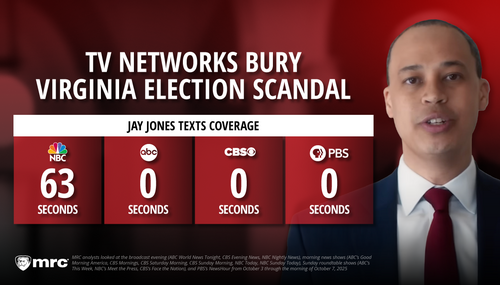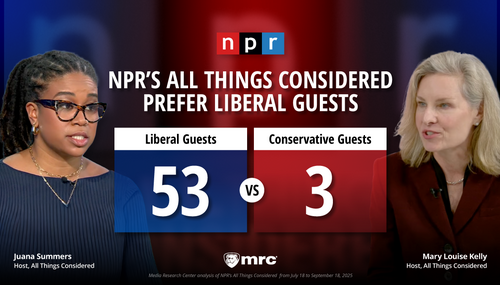Rush Limbaugh posted an interesting pair of questions at his web site yesterday: "How can CNN still be on the air with no audience? How can MSNBC have been on the air with no audience? In the old days, they're gone, kaput. Something else is tried. But they stay. And they double down on what they're doing that's losing audience."
A large part of the answer, as I noted on March 30, is that those two networks apparently have suffered very little financially as they have lost audience. That's because, as is apparently the case with most of the major cable channels, their primary source of revenue comes from "subscriptions," also referred to as "carriage fees" or "license fee revenues." In plain English, cable channels get paid a great deal of money even if nobody watches them, and don't benefit as much as would be expected when their audience grows.
I have done some additional research since my original post confirming how relatively immune to normal market pressures these two audience-bleeding networks are.
David Bauder at the Associated Press gave an overview of the situation on March 29, in the following two paragraphs:
Despite the ratings, analyst SNL Kagan predicts MSNBC will earn $509 million in revenue this year. While that's below Fox News Channel ($2.18 billion) and CNN ($1.16 billion), that would still be slightly up from $501 million in 2014, Kagan said.The financial health is largely due to long-term deals with cable and satellite operators to carry MSNBC, made when the network sold itself as a counterbalance to Fox News, said Derek Baine, Kagan analyst. Bad ratings depress advertising prices, and while they would hurt MSNBC's future if they persist, the advertising is not as important as the carriage deals.
The following charts found at an October 2014 Pew Research post confirm how ridiculous the situation is:
Corroborating the "long-term" nature of the carriage deals to which Bauder referred, the charts indicate that Fox didn't catch up to their two rivals in revenues until 2008, even though its audience already dwarfed theirs. Even now, though its relatively weak-performing but improving web operation may partially explain it, Fox's revenues are still only double CNN's despite a 4-1 audience edge (it's not clear whether Pew also included CNN's separate HLN network in the above chart; even if it didn't, Fox's audience advantage would be significantly higher than its 2-1 revenue advantage). After years of being absurdly low by comparison, Fox's 4-1 revenue advantage over MSNBC appears to be roughly the same as its proportional audience lead.
Carriage fees, described in the following paragraph from a separate Pew report, explain why CNN and MSNBC contine to grow even as their audience declines:
All cable channels, including news channels, charge a fee each month to cable providers like Comcast in exchange for the provider’s right to carry those channels in their packages. Providers, in turn, pass along those fees to consumers in the form of their monthly bills. Among the 12 news channels studied for this report—including CNN, Fox News Channel, MSNBC —license fee revenue amounted to an estimated $2.8 billion in 2013, accounting for the majority of TV audience revenue as well as about half of cable news channels’ total revenue.
So over the length of the "long-term" deals with each of the providers (which would also include satellite services like Dish and DirecTV), a huge portion of a cable channel's revenue is guaranteed, regardless of audience size. As seen in the earlier charts, that's a bad deal if your channel's viewership is growing as Fox's was in its earlier years, while it's a sweetheart deal when your audience is declining.
I can confirm after reviewing the 2013 annual report of Time Warner Inc., which owns CNN, that Pew's "about half" estimate is as on the mark as one can hope to get. TWI does not isolate CNN's operations in its annual report, but includes it within the operations of its other cable channels in its "Turner" segment.
 It's not exactly a secret that CNN strongly leans left to the point of being unfair to center-right and conservative viewpoints, nor is it news that MSNBC is even further to the left. That neither approach is attracting more eyeballs is obvious. That they haven't really cared about losing those eyeballs all that much, at least until quite recently, has been equally as obvious.
It's not exactly a secret that CNN strongly leans left to the point of being unfair to center-right and conservative viewpoints, nor is it news that MSNBC is even further to the left. That neither approach is attracting more eyeballs is obvious. That they haven't really cared about losing those eyeballs all that much, at least until quite recently, has been equally as obvious.
Carriage fees explain why. They have served to insulate the networks from their folly, essentially forcing non-viewing cable customers to subsidize them, while making Fox's upward climb far more difficult financially than it should have been.
But, perhaps, as evidenced by the shakeups in progress at MSNBC, the jig is up.
Or is it? That largely depends on how the parent-company managements at Time Warner and Comcast feel about their operations.
CNN and MSNBC are relatively small components of very big companies. If top management at TWI and Comcast can live with breakeven results or even losses that are immaterial to their overall financial results in the name of advancing or at least defending leftism, it would appear that their often insufferable and ever more strident left-wing bias — the "doubling down" to which Rush referred — can and will continue for quite some time.
CNN's and MSNBC's clearly subsidized status may at least partially explain why resistance to a la carte cable services is so fierce. If given a choice, most consumers would decide not to pay for their content.
Cross-posted at BizzyBlog.com.





